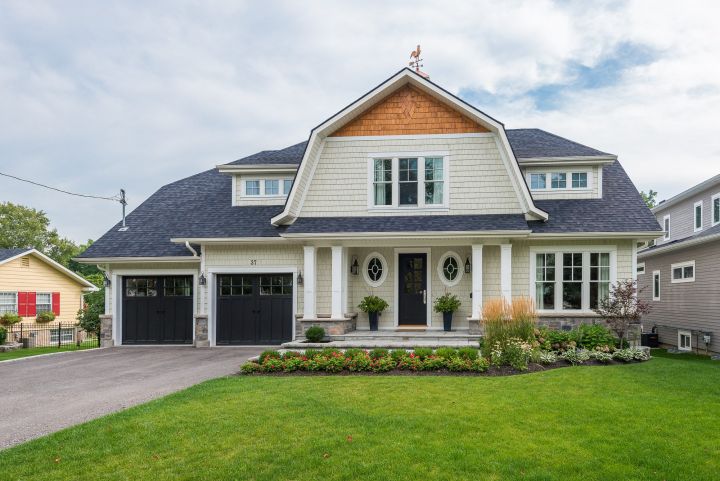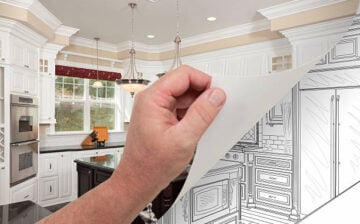
When searching for a new home, it can be hard to keep track of everything notable after viewing several properties.
From selling the property with a leasehold agreement to how much work each property will require once purchased, it’s vital that you take everything you see and hear about the property into account to establish how much you would need to spend to get it up to your standards.
Luckily, property experts from The Lease Extension Company have shared their top 11 things to look out for when viewing properties, helping you decipher which property would be the best for you.
-
Leasehold or Freehold Property:
If the property is a leasehold, the leaseholder is usually responsible for any internal repairs. This can include internal plumbing, wiring, plasterwork, paintwork and appliances, and general wear and tear.
If the property is a freehold, the freeholder is accountable for work on the structure of the building (e.g. the roof) and shared areas such as staircases or lifts. Should the work cost more than a set amount or take over a year to complete (with a fixed cost per year), the freeholder must consult all leaseholders first.
It is essential to find out if the property is a leasehold or a freehold before you invest in anything so that you are fully aware of and understand your responsibilities.
-
Damp & Water Damage:
Water damage and damp are two of the most common problems in properties, so it’s crucial that you make sure you do a full check to ensure there are no issues that could cost you thousands down the line.
Can you see or smell damp anywhere? If there is a mouldy or musty smell in the air, this is often an indicator of a damp problem.
Physical signs to look for include mildew, peeling wallpaper, blistering paint, flaking plaster and watermarked walls or ceilings. Make sure to check behind furniture and in corners, and try to feel any walls that you think look damp. If you notice any recently repainted rooms, this could be an attempt to hide unresolved dampness in the property.
When it comes to water damage, look for watermarks on the flooring, ceilings, lower walls and skirting boards. If there are any present, this can indicate if there is also a risk of flooding in the property, as well as the spread of damp.
-
Boiler Efficiency & Heating:
Check the age of the boiler in the property. Remember to ask who it was installed by, when, and the last time it received a service.
Test the working condition of any radiators by turning them all on, seeing if they heat up and feel warm enough. Ensure there are no signs of leaks or rust, and you may want to consider if they can be turned off in rooms you are not using. Check how the heating system is controlled, and make a note of what fuel it uses.
-
Insulation & Drafts:
Is the attic or the loft of the property insulated effectively? If cavity wall insulation is installed, ask when this was added and by whom.
Hold your hand against windows and doors to check for a draft. If it does feel slightly cold, this suggests that the windows and doors are not sufficiently insulated.
-
Windows:
If the windows are double-glazed, check that they are fitted flush to the property’s external walls. If you see condensation or moisture between the glass panels, the seal has deteriorated and will need to be replaced.
As well as this, make sure to investigate the status of any outdoor window frames, as this will give you an idea of the general overall condition of the house. For example, if the windows have wooden frames, test how difficult it is to push your finger into these. If you can do this easily, this may mean that the wood is rotten and must be replaced.
-
Decoration:
If the property has built-in storage units (e.g. wardrobes, kitchen cabinets), check that these are not poorly fitted so you will not have to replace them.
Additionally, if the property was recently decorated before it was put on the market, this may be an attempt to conceal any problems before selling.
-
Structural Issues:
Note any cracks in the plaster of internal walls and any gaps between the bricks in the walls outside.
It is normal to expect a few hairline cracks here and there, but investigate where extensions join onto the main building, the end of terrace walls and bay windows, as these can be at risk of falling away from the rest of the property.
-
Electrics & Plumbing:
Firstly, check the fuse board of the house, as this will usually indicate the overall state of the wiring throughout the home. Next, turn the light switches on and off to check they are working correctly, and watch for any exposed or damaged wiring.
Check the water pressure in the property by flushing the toilets and running the taps. Ask if any of the pipes are lead, as there is a potential risk that these can contaminate the water supply.
If there are any radiators in a room, time how long these take to warm up and do the same for the bathroom shower. If there are cupboards directly beneath kitchen and bathroom sinks, look inside to ensure they are dry and the pipes are not leaking.
-
Roofing & Drainage:
If the property you are viewing has a flat or nearly flat roof, ask what material was used to seal this. If you see standing water or cracks on a flat roof, this is a sign that this will need to be checked over by a professional to ensure no risks to the roof’s durability.
Often, roofs can be affected by the quality of the drains on a property, and a blocked-up drain can cause issues not just with roofing but with the entire property structure. Therefore, ensure that any drains are accessible, at the correct level and capable of draining quickly and effectively. If you are sceptical about this, try viewing the property again on a rainy day to check the drains are working.
-
Flooring:
If the floor in the property feels springy or has a damp and musty smell, this may indicate that the floorboards are possibly damp or rotten.
If concrete slabs were used when constructing the house’s ground floor, you should check for signs of sulphate attacks, as this can run the risk of the floor disintegrating. The main indicators you should check for are heaving or cracking, if the concrete feels lumpy or is domed, or if there are white salts on the floor’s surface.
-
Outdoor Spaces:
When viewing the garden or outdoor space included with the property, check for any large trees close to the house. Try to find out how far their roots extend, as they could potentially cause problems like structural damage.
When viewing a property, always list everything you want to look out for and any questions you want to ask the owners or estate agents. These lists will help you in the future when it comes to deciding which house you are going to make an offer on.
If you are still apprehensive, consider hiring a professional to carry out a full inspection of the property to see if you missed anything. Should the inspector find a large number of unexpected problems that will require repair, you may be able to negotiate with the seller of the property for a lower price or see if they will carry out the repairs for you.
If your offer on the property is still subject to contract, you can legally withdraw from the sale if you are unhappy with the house’s condition. However, consult your solicitor for advice before making any decisions like this.
We hope you found this blog post on DIY Checklist Survey For House Hunters, useful. Be sure to check out our post on Guide on How to Sell a House Fast for Cash for more great tips!
Have Experience in the Moving Industry? Want an Additional Income Stream? Work With All Around Moving!
Partner with us and we’ll help you make money by establishing your own moving consultant business. Click here to learn more.





